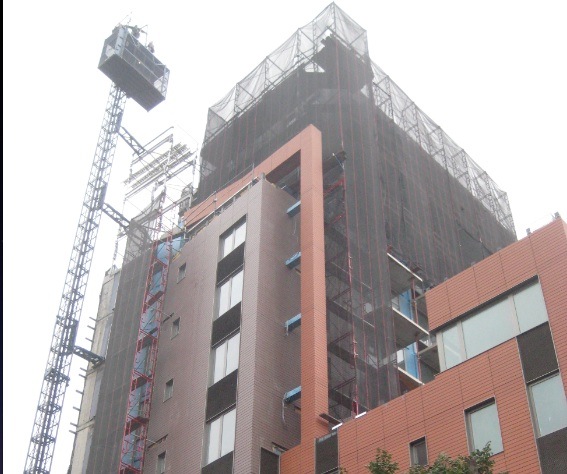Most buildings rely on a limited set of strategies for keeping water out. This course describes the rainscreen approach, which has six elements: cladding, cavity, thermal layer (insulation), air barrier, moisture barrier, and supporting wall.
When properly designed and detailed, the rainscreen approach can protect the wall from moisture damage, even in climates prone to heavy rainfall. This is because the rainscreen approach does not depend on any one element to provide perfect waterproofing protection, but instead relies on a multi-component strategy.
Take this free AIA/CES course at BD+C University
Course Learning Objectives
Based on the information presented in this course, you should be able to:
- Identify conditions that lead to water infiltration, as well as the forces by which water moves into buildings, so as to develop a comprehensive water management strategy that protects the building and enhances indoor environmental quality for occupants.
- Evaluate the effectiveness of various rain control methods, including mass walls, perfect barriers, and masonry veneers, and apply the rainscreen approach to enhance the performance and durability of the building envelope for improved IEQ and occupant health and welfare.
- Explain how the multiple elements of a rainscreen wall system work in concert to manage moisture and extend the lifespan of building materials, while identifying potential sources of error and premature deterioration that must be dealt with to prevent degradation to indoor environmental quality and occupant/visitor health and welfare.
- Explore the environmental and health implications of catastrophic exterior wall failure, using the examples of the Pacific Northwest condominium debacle, the failure of early EIFS cladding, and the subsequent improvement of EIFS systems.
Related Stories
| Dec 28, 2014
Robots, drones, and printed buildings: The promise of automated construction
Building Teams across the globe are employing advanced robotics to simplify what is inherently a complex, messy process—construction.
| Jul 17, 2014
A harmful trade-off many U.S. green buildings make
The Urban Green Council addresses a concern that many "green" buildings in the U.S. have: poor insulation.
| Jul 7, 2014
7 emerging design trends in brick buildings
From wild architectural shapes to unique color blends and pattern arrangements, these projects demonstrate the design possibilities of brick.
Sponsored | | Mar 25, 2014
Johns Hopkins chooses SLENDERWALL for a critical medical facility reconstruction
After decades of wear, the hand-laid brick envelope of the Johns Hopkins nine-story Nelson/Harvey inpatient facility began failing. SLENDERWALL met the requirements for renovation.
| Feb 14, 2014
Scrap tires used to boost masonry blocks at Missouri University of S&T
Research could lead to blocks that use waste material and have seismic and insulating benefits.
| Feb 5, 2014
BIA Opens Entries for 25th Annual Brick in Architecture Awards
Entries open on February 10 for the Brick Industry Association's (BIA) Brick in Architecture Awards. Celebrating its silver anniversary, BIA's annual honors spotlight outstanding, innovative and sustainable architecture that incorporates clay brick products as the predominant exterior building or paving material.
| Jan 24, 2014
Structural concrete requirements under revision: ACI 318 standard
The American Concrete Institute (ACI), an organization whose mission is to develop and disseminate consensus-based knowledge on concrete and its uses, is finalizing a completely reorganized ACI 318-14: Building Code Requirements for Structural Concrete.
| Jan 17, 2014
The Starchitect of Oz: New Gehry building in Sydney celebrates topping out
The Dr. Chau Chak Wing Building at the University of Technology, Sydney, will mark Frank Gehry's debut project in the Australian metro.
| Jan 11, 2014
Getting to net-zero energy with brick masonry construction [AIA course]
When targeting net-zero energy performance, AEC professionals are advised to tackle energy demand first. This AIA course covers brick masonry's role in reducing energy consumption in buildings.
| Dec 10, 2013
16 great solutions for architects, engineers, and contractors
From a crowd-funded smart shovel to a why-didn’t-someone-do-this-sooner scheme for managing traffic in public restrooms, these ideas are noteworthy for creative problem-solving. Here are some of the most intriguing innovations the BD+C community has brought to our attention this year.















